What is a Microprocessor ?
Contents
What is a Microprocessor ?
A microprocessor is an integrated circuit (IC) which incorporates core functions of a computer’s central processing unit (CPU). It is a programmable multipurpose silicon chip, clock driven, register based, accepts binary data as input and provides output after processing it as per the instructions stored in the memory.
Block Diagram of a Computer
Why we need a Microprocessor ?
Thank you “B B DWIVEDI” for asking this question in the comment. So I thought of adding it here such that it will be helpful for all those who read this article.
A microprocessor is similar to our human brain, it can be trained to do anything. It can be programmed to do anything we want based on it’s instruction set and capabilities. Sometimes solutions are very complex, circuits also becomes very complex if we try to solve it without programming.
Here is my analogy. Imagine you want to make a big building. Usage of BRICKS will make the construction process simple and cost effective. And it will also give you the freedom to make the building in shape and size what you like. Instruction set in a microprocessor are the bricks which you can use to solve your problem. By using those instructions you can easily solve complex program.
How does a Microprocessor work ?
A processor is the brain of a computer which basically consists of Arithmetical and Logical Unit (ALU), Control Unit and Register Array. As the name indicates ALU performs all arithmetic and logical operations on the data received from input devices or memory. Register array consists of a series of registers like accumulator (A), B, C, D etc. which acts as temporary fast access memory locations for processing data. As the name indicates, control unit controls the flow of instructions and data throughout the system.
So basically a microprocessor takes input from input devices, process it as per instructions given in the memory and produces output.
Advantages of a Microprocessor
- Low Cost
Microprocessors are available at low cost due to integrated circuit technology. Which will reduce the cost of a computer system. - High Speed
Microprocessor chips can work at very high speed due to the technology involved in it. It is capable of executing millions of instructions per second. - Small Size
Due to very large scale and ultra large scale integration technology, a microprocessor is fabricated in a very less footprint. This will reduce the size of the entire computer system. - Versatile
Microprocessors are very versatile, the same chip can be used for a number of applications by simply changing the program (instructions stored in the memory). - Low Power Consumption
Microprocessors are usually manufactured using metal oxide semiconductor technology, in which MOSFETs (Metal Oxide Semiconductor Field Effect Transistors) are working in saturation and cut off modes. So the power consumption is very low compared to others. - Less Heat Generation
Compared to vacuum tube devices, semiconductor devices won’t emit that much heat. - Reliable
Microprocessors are very reliable, failure rate is very less as semiconductor technology is used. - Portable
Devices or computer system made with microprocessors can be made portable due to the small size and low power consumption.
Common Terms used in a Microprocessor
Here are some common terms that we will use in microprocessor field.
Bus
A bus is a set of conductors intended to transmit data, address or control information to different elements in a microprocessor. Usually a microprocessor will have 3 types of buses : Data Bus, Control Bus and Address Bus. An 8-bit processor will be using 8-bit wide bus.
Instruction Set
Instruction set is the group of commands that a microprocessor can understand. So instruction set is an interface between hardware and software (program). An instruction commands the processor to switch relevant transistors for doing some processing in data. For eg. ADD A, B; is used to add two numbers stored in the register A and B.
Word Length
Word Length is the number of bits in the internal data bus of a processor or it is the number of bits a processor can process at a time. For eg. An 8-bit processor will have an 8-bit data bus, 8-bit registers and will do 8-bit processing at a time. For doing higher bits (32-bit, 16-bit) operations, it will split that into a series of 8-bit operations.
Cache Memory
Cache memory is a random access memory that is integrated into the processor. So the processor can access data in the cache memory more quickly than from a regular RAM. It is also known as CPU Memory. Cache memory is used to store data or instructions that are frequently referenced by the software or program during the operation. So it will increase the overall speed of the operation.
Clock Speed
Microprocessors uses a clock signal to control the rate at which instructions are executed, synchronize other internal components and to control the data transfer between them. So clock speed refers to the speed at which a microprocessor executes instructions. It is usually measured in Hertz and are expressed in megahertz (MHz), gigahertz (GHz) etc.
Classification of Microprocessors
Based on Word Length
Hope you read about word length above. So based on the word length of a processor we can have 8-bit, 16-bit, 32-bit and 64-bit processors.
RISC – Reduced Instruction Set Computer
RISC is a type of microprocessor architecture which uses small, general purpose and highly optimized instruction set rather than more specialized set of instructions found in others. RISC offers high performance over its opposing architecture CISC (see below). In a processor, execution of each instruction require a special circuit to load and process the data. So by reducing instructions, the processor will be using simple circuits and faster in operation.
- Simple instruction set
- Larger program
- Consists of large number of registers
- Simple processor circuitry (small number of transistors)
- More RAM usage
- Fixed length instructions
- Simple addressing modes
- Usually fixed number of clock cycles for executing one instruction
CISC – Complex Instruction Set Computer
CISC is the opposing microprocessor architecture for RISC. It is made to reduce the number of instructions per program, ignoring the number of cycles per instruction. So complex instructions are directly made into hardware making the processor complex and slower in operation.
This architecture is actually designed to reduce the cost of memory by reducing the program length.
- Complex instruction set
- Smaller program
- Less number of registers
- Complex processor circuitry (more number of transistors)
- Little RAM usage
- Variable length instructions
- Variety of addressing modes
- Variable number of clock cycles for each instructions
Special Purpose Processors
There are some processors which are designed to handle some specific functions.
- DSP – Digital Signal Processors
- Coprocessors – processors used along with a main processor (8087 math-coprocessor used with 8086)
- Input/Output processors
- Transputer – Transistor Computer : Microprocessor with its own local memory
Examples
- Intel 4004 – The First Microprocessor
- Intel 8085
- Intel 8086
- Intel Pentium 4
- Intel Core i7
- AMD Athlon






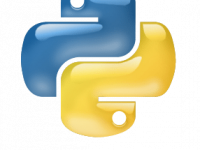
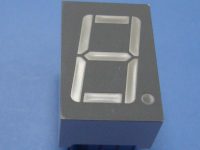
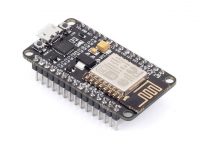
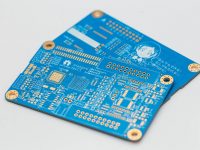

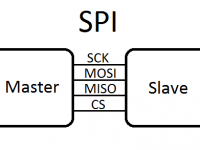

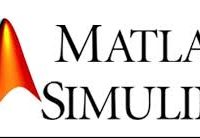
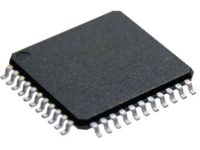
I love the information
What are the generation of microprocessor.
What are the limitations and virtues of micros.
good stuff
April 5, 2017
What is the date that this article was published in? I just need to cite it.
Good question. I have added the answer above, https://electrosome.com/microprocessor/#Why_we_need_a_Microprocessor
Why do we need a microprocessor?